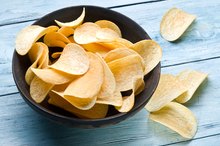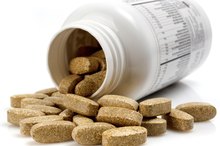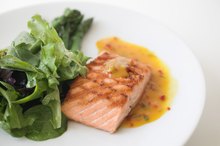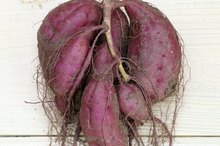What does fact checked mean?
At Healthfully, we strive to deliver objective content that is accurate and up-to-date. Our team periodically reviews articles in order to ensure content quality. The sources cited below consist of evidence from peer-reviewed journals, prominent medical organizations, academic associations, and government data.
The information contained on this site is for informational purposes only, and should not be used as a substitute for the advice of a professional health care provider. Please check with the appropriate physician regarding health questions and concerns. Although we strive to deliver accurate and up-to-date information, no guarantee to that effect is made.
How Much Potassium Does a Female Need?
Potassium is important for maintaining blood pressure, nerves, muscles and bones. It works in conjunction with sodium to balance electrolytes in the body. Like men, women over 19 years old need 4,700 milligrams of potassium per day; pregnant women also need this amount. Women who are breastfeeding need 5,100 milligrams per day. You can get potassium by consuming unprocessed foods such as red meat, fish, poultry, milk, nuts, seeds and beans.
Potassium Intake
The Third National Health and Nutrition Examination Survey, published in "Archives of Internal Medicine" in 2001, showed that women in the United States eat an average of 2,300 milligrams of potassium a day -- only half of the recommended intake. The Linus Pauling Institute at Oregon State University reports that most people in the United States eat more sodium than potassium 2. This has been shown to increase risks for diseases such as high blood pressure, osteoporosis and kidney stones.
Related Articles
References
- Medline Plus: Potassium in Diet
- Linus Pauling Institute at Oregon State University: Potassium
- Archives of Internal Medicine: Impact of Diet on Blood Pressure and Age-Related Changes in Blood Pressure in the U.S. Population Analysis of NHANES III
- Aburto, et. al. Effect of increased potassium intake on cardiovascular risk factors and disease: systematic review and meta-analyses. BMJ. 2013 Apr 3;346:f1378. DOI: 10.1136/bmj.f1378.
- Appel LJ, Moore TJ, Obarzanek E, et al. A clinical trial of the effects of dietary patterns on blood pressure. DASH Collaborative Research Group. N Engl J Med. 1997;336(16):1117-1124.
- Ferraro PM, et. al. Dietary Protein and Potassium, Diet–Dependent Net Acid Load, and Risk of Incident Kidney Stones. CJASN. October 2016, 11 (10) 1834-1844; DOI: 10.2215/CJN.01520216
- Granchi, D, et. al. Potassium Citrate Supplementation Decreases the Biochemical Markers of Bone Loss in a Group of Osteopenic Women: The Results of a Randomized, Double-Blind, Placebo-Controlled Pilot Study. Nutrients. 2018 Sep 12;10(9). pii: E1293. DOI: 10.3390/nu10091293.
- Linus Pauling Institute. Potassium.
- Macdonald, HM, et. al. Effect of potassium citrate supplementation or increased fruit and vegetable intake on bone metabolism in healthy postmenopausal women: a randomized controlled trial. Am J Clin Nutr. 2008 Aug;88(2):465-74.
- National Institute of Health. Office of Dietary Supplements. Potassium.
Writer Bio
Alyssa Clement holds Bachelor's degrees in psychology and nutrition. She has completed clinical nutrition internships in long-term care and acute care along with food service and community nutrition internships. Her research includes nutrition supplements, weight loss, exercise and sports nutrition.









